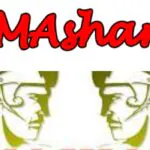The latest AI text-to-image generators are gaining massive popularity. Tools like Midjourney, OpenAI DALL-E 2, and CF Spark Art allow users to create high-quality images based on a simple text prompt.
These AI tools use a variety of processes, including style transfer and GANs (Generative Adversarial Networks) to transform text prompts into images. By understanding how these models work, libraries can better understand the opportunities and challenges they create.
1. Improved Search Engine Optimization
Creating alt text for your images is an important step in optimizing your website for search engines. This text helps search engines understand what the image is about, and it also allows screen-reading tools to describe the image for visually impaired users.
But crafting the perfect description for each of your images can be difficult, especially if you have many images on your website. Image generators from text can help you save time and effort by automatically generating descriptive alt text for your images.
These generators use a generative model to create an image from a text prompt. The model encodes the text using a recurrent neural network or transformer architecture and generates the corresponding image. The resulting image is usually a stylized version of the text that was inputted, but it can also be completely new and creative.
2. Better User Experience
A text-to-image generator is a powerful tool that can help create unique and engaging images. It can be used for a wide variety of purposes, from spicing up icons for a website to brainstorming artistic concepts. However, like all tools, it’s important to be aware of the ethical implications and ensure that they are being used responsibly.
Image generators use machine learning algorithms to process text prompts and produce images that match. This can result in sexist, racist, or otherwise offensive results depending on the data sets available. For this reason, it is important to experiment with different prompts and phrasings to find the best match.
AI text-to-image generators can be used to create a variety of different types of art. From fantasy illustrations to vivid landscapes, the possibilities are endless.
3. Increased Sales
Image generators from text offer marketers a new way to create visually appealing images and graphics that are consistent with their brand. They save time and money by eliminating the need for human designers or artists and can produce high-quality images in just minutes.
AI tools also allow businesses to target specific demographics and evoke emotions with their visual content, which can help increase sales and leads. In addition, they can create re-shareable memes that will boost engagement and conversion on social media.
But with so many options available, it’s important to know how to choose the right AI image generator for your business. Read on to learn more about these powerful tools and how they can benefit your marketing strategy.
4. Increased Productivity
Many designers and artists begin their work with an idea or concept that they want to bring to life. Image generators from text can help you quickly create ideas and images to support your vision. This can increase your productivity and help you save time.
The underlying technology behind these image generators is a form of artificial intelligence (AI). The software uses AI to interpret a text description and produce an image, such as a photo or painting. The results are often stunning and can defy physics and human imagination.
Typically, these models use an architecture such as a long short-term memory (LSTM) or transformer model for the text-to-image encoding step and then a generative adversarial network or diffusion model for the generation of the image. However, other types of models are also available.
5. Increased Customer Satisfaction
Image generators from text are popping up all over the internet, satisfying our brains’ primitive need for instant gratification. They’re also a powerful tool that can be used to create creative content for a variety of purposes, from transforming photos into fantasy illustrations to creating 3D and anime characters.
Most image generators rely on a technique called “diffusion,” which requires vast amounts of image-text pairs to train an algorithm that understands what a prompt means. But these algorithms often replicate prevailing stereotypes and social biases when generating images.
Fotor, an image editing software that has been used by millions of users worldwide, is one such text-to-image generator that uses a different approach called “style transfer.” The software allows users to change an original photo into a painting or digital art.






Comments closed.